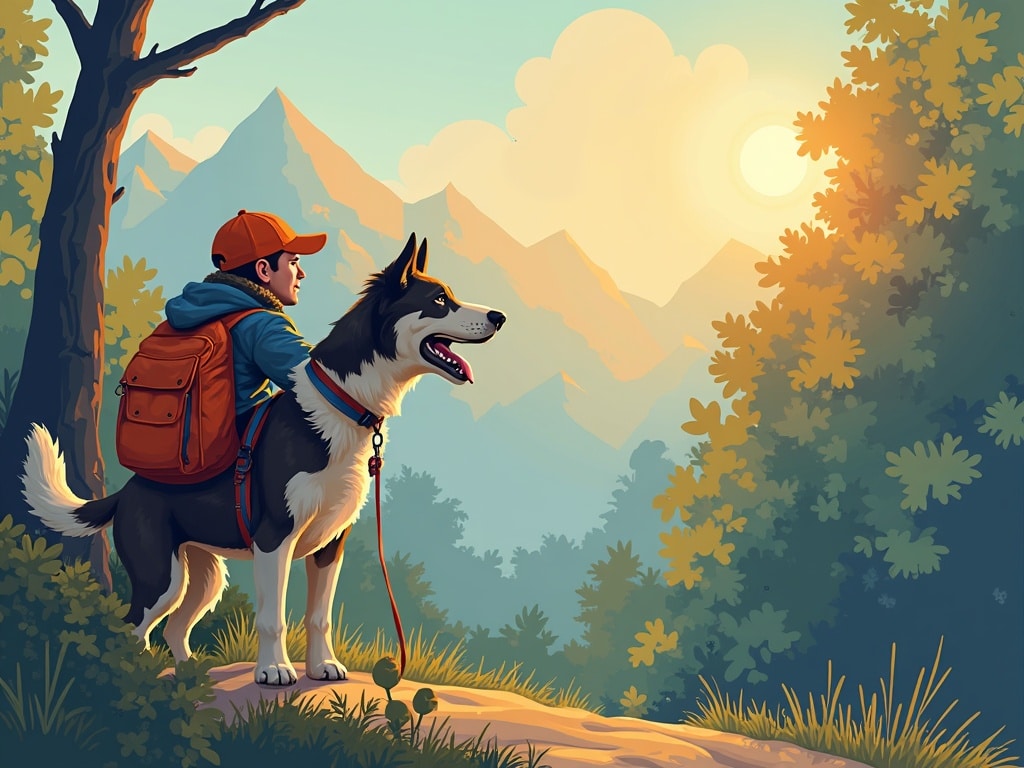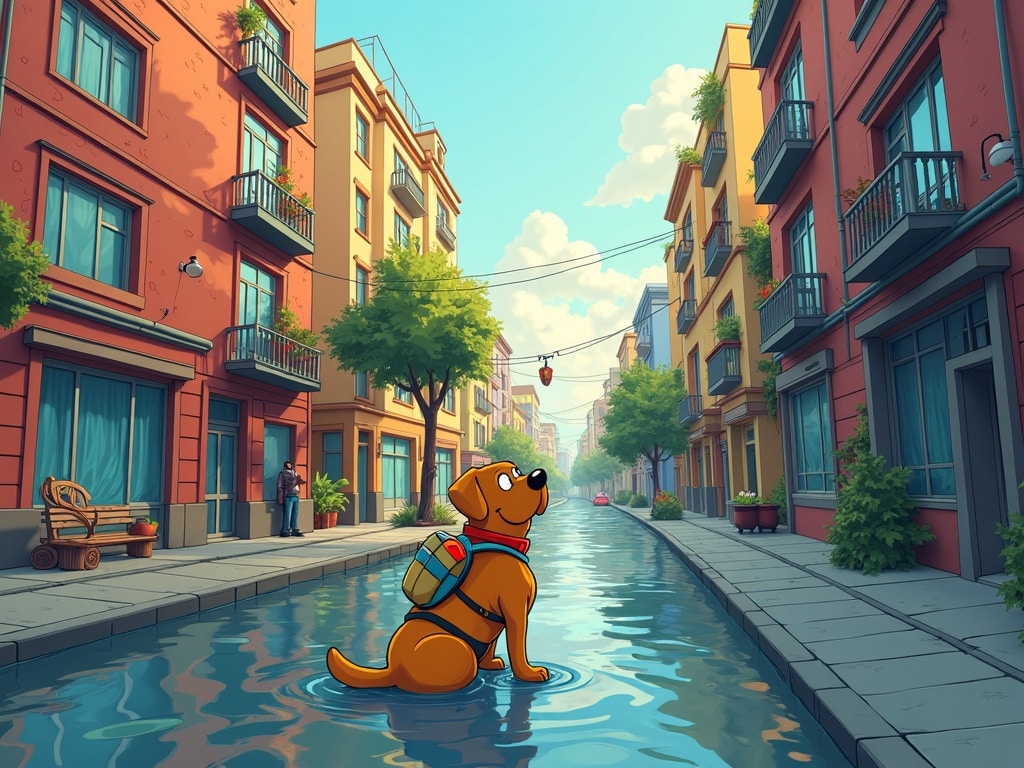Urban Exploration with Your Dog: A Guide to Safe and Exciting Adventures
Imagine this: You and your furry best friend, venturing into the hidden heart of your city. No, not just the dog park. We're talking about uncovering forgotten tunnels, scaling (small, safe) abandoned walls, and sniffing out the secrets that skyscrapers and sidewalks conceal. Sounds thrilling, right? Urban exploration with your dog can be an incredibly bonding and enriching experience, but it demands careful planning and a deep understanding of safety. This is your comprehensive guide to navigating the concrete jungle with your canine companion.
Is Urban Exploration with Your Dog Right for You?
Before diving into the how-to, it's crucial to honestly assess if your dog is suited for this type of adventure. Urban exploration isn't your average walk in the park.
Temperament and Training
**Obedience is Key:Your dog *musthave impeccable recall, sit, stay, and leave-it commands. This isn't optional; it's a matter of safety. You need to trust that your dog will respond instantly, even in distracting or potentially dangerous environments.
**Socialization:Is your dog comfortable around unexpected noises, crowds, and other animals (including stray cats or even the occasional rat)? A reactive or anxious dog will not enjoy urban exploration and could be put at risk.
**Confidence Level:A timid dog might be overwhelmed by the strange sights, sounds, and smells of abandoned places. Look for a dog that is naturally curious and confident, but not overly bold or reckless.
Physical Fitness
**Age and Breed Considerations:While some senior dogs might enjoy a leisurely stroll through less challenging locations, most require a certain level of fitness. Brachycephalic (short-nosed) breeds like bulldogs may struggle with strenuous activity, especially in hot environments.
**Paw Protection:Pavement, debris, and uneven terrain can wreak havoc on your dog's paws. You'll need to consider paw protection, whether that's through toughening exercises or the use of dog boots.
**Stamina:Urban exploration can involve a lot of walking, climbing (small obstacles), and navigating uneven surfaces. Ensure your dog has the stamina to handle the duration and intensity of your planned adventures.
Essential Gear for Urban Exploration with Your Dog
Equipping yourself and your dog properly is paramount. Here’s a checklist to get you started:
**For You:**
**Sturdy Boots:Protect your ankles and feet from hazards.
**Gloves:Essential for gripping and protecting your hands.
**Headlamp or Flashlight:Many urban exploration locations lack natural light.
**Backpack:To carry essentials for you and your dog.
**First-Aid Kit:For both humans and canines.
**Water and Snacks:Staying hydrated and energized is crucial.
**Navigation Tools:Map, compass, or GPS device (and know how to use them!).
**Communication Device:A fully charged cell phone or walkie-talkies.
**For Your Dog:**
**Harness with a Secure Leash:A harness distributes pressure more evenly than a collar, especially when navigating obstacles. A hands-free leash can be incredibly helpful.
**Dog Boots (Optional):Protect paws from sharp objects and hot pavement. Gradually introduce your dog to boots before heading out.
**Water Bowl and Water:Hydration is crucial, especially during physical activity.
**Dog Treats:Positive reinforcement is key for maintaining good behavior.
**Waste Bags:Always clean up after your dog. Leave No Trace!
**Dog First-Aid Kit:Include items like antiseptic wipes, bandages, and a tick remover.
**Towel:For drying muddy paws or providing a comfortable place to rest.
Choosing Your Urban Exploration Location
Not all abandoned places are created equal, and some are downright dangerous (and often illegal) to enter. Here’s how to select safe and suitable locations for urban exploration with your dog:
Legality and Permissions
**Research Local Laws:Trespassing laws vary by location. It’s crucial to know the legal ramifications of entering private or restricted property.
**Seek Permission When Possible:If you can identify the property owner, attempt to obtain permission before entering. This shows respect and can prevent legal issues.
**Avoid High-Security Areas:Stay away from active construction sites, government facilities, or any area marked with No Trespassing signs.
Safety Considerations
**Structural Integrity:Never enter buildings that appear unstable or have obvious signs of disrepair. Collapsing structures pose a significant risk.
**Environmental Hazards:Be aware of potential hazards such as asbestos, lead paint, mold, and contaminated water.
**Animal Dangers:Keep an eye out for wild animals, stray dogs, and rodents.
**Human Dangers:Be aware of the potential for encountering other people in abandoned locations, including squatters or individuals engaged in illegal activities.
**Accessibility for Your Dog:Can your dog physically navigate the terrain? Are there obstacles that might be too challenging or dangerous? Choose locations that are within your dog's physical capabilities.

Safety First: Essential Precautions for Urban Explorers with Dogs
Safety is not just a guideline; it's the foundation of responsible urban exploration with your dog.
Pre-Trip Planning
**Thorough Research:Before you even think about setting foot in a location, conduct extensive research. Look for information about the history of the site, potential hazards, and any known security measures.
**Check the Weather:Avoid exploring during extreme weather conditions, such as heat waves, heavy rain, or strong winds.
**Inform Someone of Your Plans:Tell a friend or family member where you're going, when you expect to return, and what route you plan to take.
**Buddy System:Never explore alone. Bring a human companion who can assist you in case of an emergency.
During the Exploration
**Constant Vigilance:Pay close attention to your surroundings. Be aware of potential hazards, such as broken glass, exposed wiring, and unstable surfaces.
**Leash Control:Keep your dog on a leash at all times. This prevents them from running off, encountering dangers, or disturbing wildlife.
**Protective Gear:Ensure both you and your dog are wearing appropriate protective gear, including sturdy boots, gloves, and potentially eye protection.
**Stay on Marked Paths (When Possible):Stick to established paths or trails to minimize the risk of encountering hidden hazards.
**Listen to Your Dog:Your dog's instincts can be invaluable. If they seem hesitant or uneasy about a particular area, trust their judgment and avoid it.
**Emergency Plan:Have a plan in place for how to handle emergencies, such as injuries or getting lost.
Post-Exploration
**Thorough Check:Inspect yourself and your dog for any injuries, ticks, or other potential problems.
**Clean Up:Properly dispose of any waste and ensure you haven't left anything behind.
**Debrief:Discuss the experience with your companion and note any lessons learned for future explorations.
Respect the Environment: Leave No Trace
Urban exploration should be about appreciating the history and beauty of forgotten places, not about damaging or defacing them. Adhere to the Leave No Trace principles:
**Pack It In, Pack It Out:Carry out everything you carry in, including trash, food wrappers, and dog waste.
**Minimize Impact:Avoid disturbing vegetation, wildlife, or historical artifacts.
**Leave What You Find:Do not remove or damage anything from the site.
**Respect Wildlife:Observe animals from a distance and do not feed them.
**Be Considerate of Others:Respect the privacy of residents and avoid causing disturbances.
Alternative Adventures: When Urban Exploration Isn't an Option
Sometimes, the risks or legal restrictions associated with urban exploration are simply too great. Here are some alternative adventures you can enjoy with your dog:
**Geocaching:A treasure-hunting game using GPS coordinates, often leading to interesting locations in urban and natural environments.
**Hiking in Urban Parks:Many cities have extensive park systems with trails that offer a sense of adventure without the risks of abandoned buildings.
**Visiting Historical Landmarks:Explore historical sites and learn about your city's past while keeping your dog safely on a leash.
**Dog-Friendly Walking Tours:Join a guided tour that allows dogs and learn about your city's history and culture.
**Urban Scavenger Hunts:Create your scavenger hunt around your city, focusing on landmarks, public art, and other interesting features.
Urban exploration with your dog can be an extraordinary adventure, forging an even deeper connection between you and your best friend. But remember, it demands respect, responsibility, and above all, safety. By prioritizing these elements, you can unlock a world of hidden wonders while ensuring the well-being of your canine companion. So, leash up, do your research, and prepare to uncover the secrets that lie waiting in the heart of your city. Happy exploring!

